Last August, China raised global eyebrows when it successfully tested Starry Sky-2, the Hypersonic aircraft capable of travelling at 4,563 mph (7,344 km/h). During its flight, the aircraft maintained speeds above Mach 5 (3,806 mph) for 400 seconds and reached a top speed of Mach 6, or 4,563 mph. At such speed, it could penetrate any anti-missile defence system currently available.
In Oct this year, after delivering his speech commemorating the 70th anniversary of the Chinese Communist Party’s rule, Chinese President Xi Jinping revealed “Dongfeng 41” (literally means “East Wind-41”) in a military parade. The DF-41, China’s most advanced nuclear missile, has an operational range of more than 14,000 kilometers and can carry about 10 independently nuclear warheads.
In essence, the DF-41 is the world’s longest range missile, surpassing the range of the U.S. LGM-30 Minuteman-III which has a reported range of 13,000 kilometres. Apparently, the Chinese’ fourth-generation strategic nuclear weapon could reach the United States in 30 minutes, travelling at top speed of Mach 25 (30,626 km/h; 19,030 mph) – approximately 8.5073 km/s.
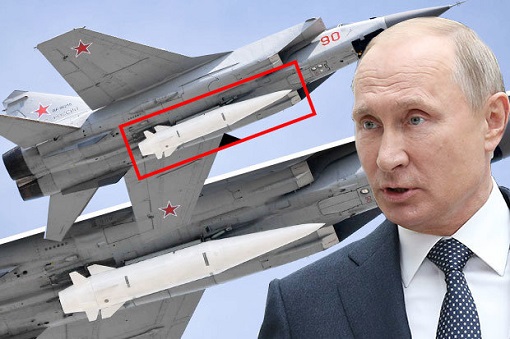
Prior to the China’s revelation, Russian President Vladimir Putin declared that the Kh-47M2 Kinzhal hypersonic missile system had reached speeds of Mach 20 – more than 3 times the speed of Chinese Starry Sky-2. The Kinzhal (Dagger) was unveiled by Putin in March 2018 as one of six new hypersonic weapons that would imminently enter service in the Russian armed forces.
Even though the Russian’s Kinzhal can deploy a nuclear warhead for a strategic strike role, what makes it truly jaw-dropping was its ability to fulfil a tactical ship hunting role at extreme ranges. Even with zero warhead, the precision, range, and hypersonic speed possessed by Kinzhal means it could destroy a large warship using its kinetic energy impact alone.
The best part was, the fearsome Kinzhal has been operational since March 2018. The Russian military has refurbished at least ten MiG-31 interceptors to deploy Kinzhal air-to-air missiles. At a mind-boggling speed of 15,345 mph, the deployment of Kinzhal means the Russian Air Force would be able to target U.S. warships up to 3,500 km away from its coasts.

Putin also announced that Russia has its own Hypersonic glide vehicle – the Avangard – scheduled to be operational this year (2019). Making good on his promise, Russia has just announced that the nation’s first regiment of Avangard hypersonic missiles has been deployed. Putin has claimed that the nuclear-capable missiles can travel at 27 times the speed of sound.
Calling it a “landmark achievement”, Russian Defense Minister Sergei Shoigu confirmed the “Avangard hypersonic glide vehicle entered service at 10:00 Moscow time on 27 December, 2019”. Clearly to send a message to the U.S., President Putin proudly announced – “Not a single country possesses hypersonic weapons, let alone continental-range hypersonic weapons.”
In December 2018, the weapon hit a practice target 6,000km (3,700 miles) away in a test launch at Dombarovskiy missile base in the southern Ural Mountains, suggesting that when the weapon is to be deployed, it would be in the Urals. When Mr Putin unveiled the Avangard and other weapons systems during his annual state-of-the-nation address in March 2018, he described it as a “meteorite” and a “fireball”.
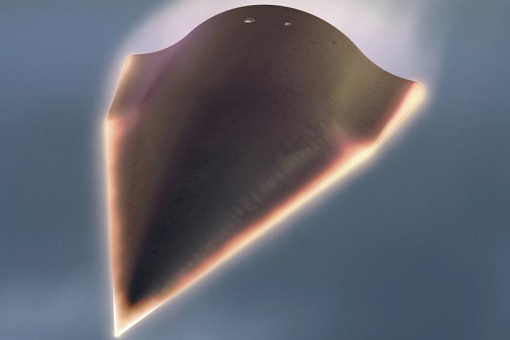
Moscow said the Avangard was launched on top of an intercontinental ballistic missile (ICBM) but it can make sharp manoeuvres on the way to its target, making it more difficult to track or intercept. The Avangard, which President Putin said could penetrate current and future missile defence systems, can carry a nuclear weapon of up to two megatons.
The Pentagon could only respond to the deployment by saying it would “not characterise the Russian claims” about the Avangard’s capabilities. When it was first unveiled by Putin, some Western weapons specialists had expressed scepticism about its effectiveness. That prompted Russia to allow U.S. experts to inspect the Avangard on 26 November this year.
“Under the Treaty on Measures for the Further Reduction and Limitation of Strategic Offensive Arms (New START), a U.S. inspection group was shown the Avangard missile system with the hypersonic boost-glide vehicle on the territory of Russia on November 24-26, 2019,” – said the Russian Defense Ministry.
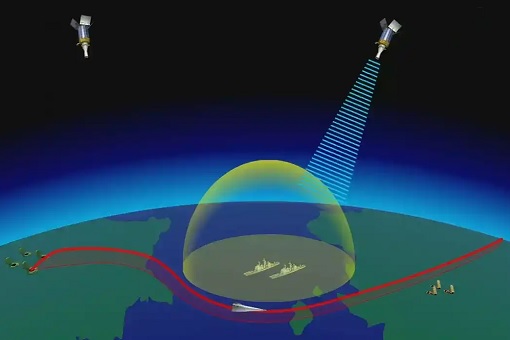
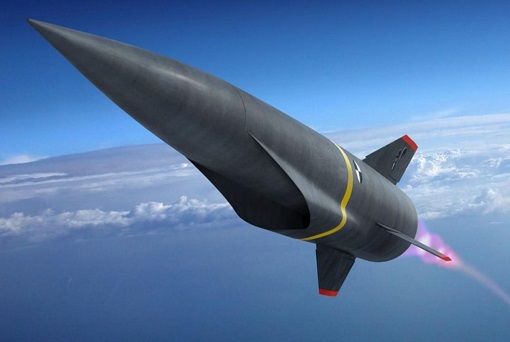
United States officials have been toying with the idea of deploying a layer of sensors in space to be able to detect enemy missiles more quickly, especially the hypersonic weapons. Such an early warning system could allow the U.S. to strike incoming enemy missiles during the first minutes of flight, when the booster engines are still burning.
Of course, the best defence is to possess its own hypersonic weapons as a deterrent from being attacked by Russia or China. However, Defense Secretary Mark Esper said in August that it would probably take a couple of years before the U.S. has one ready for service. The U.S. was reportedly busy working on its Hypersonic Technology Vehicle 2 and Advanced Hypersonic Weapon in order not to be left out.
But there’s something Russia has prepared for the year 2020 – the RS-28 Sarmat nuclear-armed intercontinental ballistic missile (ICBM). Dubbed “Satan 2” by the NATO community, Putin described Sarmat as a “heavy,” un-interceptable ICBM with practically “unlimited range.” After several years of technical problems, it appears Russian engineers may have fixed the problems.
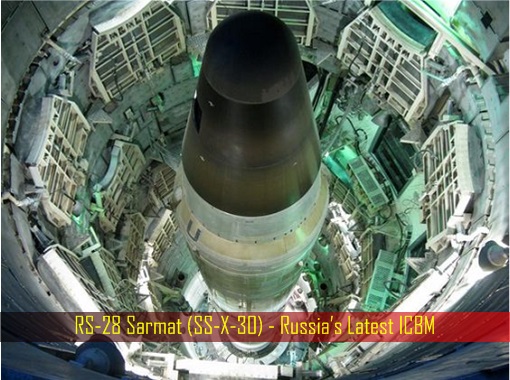
Other Articles That May Interest You …
- Xi Jinping Says “No Force Can Stop The Chinese”, Shows Nuclear Missiles Which Can Hit The U.S. In 30-Minutes
- Balance Of Power – After S-400 Missile Defense System, Russia Offers To Sell Su-35 Fighter Jets To Turkey
- China Tests Anti-Ship Ballistic Missiles In South China Sea – Here’s Why The U.S. Is Extremely Upset
- Here Are The World’s Top-25 Most Powerful Countries For The Year 2019
- Nice & Cheap – China Sells Tons Of Drones To The Middle East, And The Unhappy U.S. Scrambles To Catch Up
- A Chinese $2 Billion Investment Is Ready To Take Over An Israel Port – And The U.S. Is Unhappy
- Success!! – China Tested “Unstoppable” Hypersonic Aircraft At 6-Times The Speed Of Sound
- The Hidden Message – Here’s Why Russia Tests Its Invincible “Satan 2” Missile … Again
- Chinese Flag Raised At Sri Lanka Port Raises Concern Of China Secret Naval Base
- Here Are Russia’s 3 Awesome Weapons Which The U.S. Is Absolutely Terrified Of

|
|
December 29th, 2019 by financetwitter
|


|

|

|

|

|

|




























Malaysia also has vast years of expertise making the Proton.